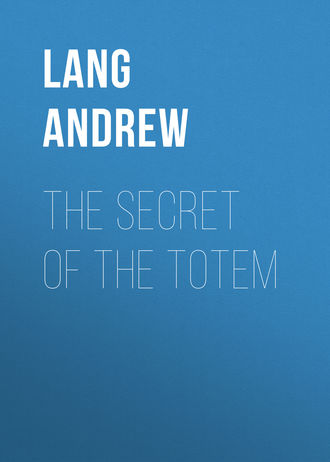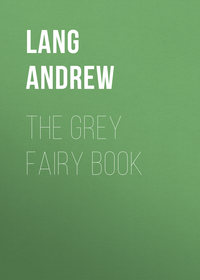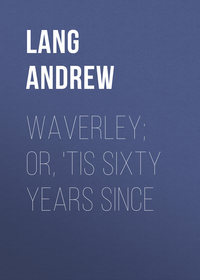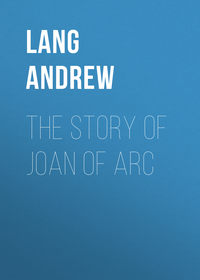 полная версия
полная версияThe Secret of the Totem
Next, as to that point, Mr. Hill-Tout writes:279—
"To return to Mr. Lang's primary objection, that the evolution of the group totem cannot proceed from the personal, individual totem because in the more primitive forms of society where totemism originated "male ancestors do not found houses or clan names," descent being on the female side. As Mr. Lang has laid so much stress upon this argument, and is able apart from it to appreciate the force of the evidence for the American point of view, if it can be clearly shown that his objection has no basis in fact, that his conception of the laws of inheritance under matriarchy is faulty, consistency must needs make him a convert to the American view. The singular error into which Mr. Lang has fallen is in overlooking the fact that male property and rights are as hereditable under mother-right as under father-right, the only difference being that in the latter case the transmission is directly from the father to his offspring, and in the former indirectly from the maternal uncle to his sister's children. What is there to prevent a man of ability under matriarchy from 'founding a family,' that is, acquiring an individual totem which by his personal success and prosperity is looked upon as a powerful helper, and therefore worthy of regard and reverence? Under mother-right the head of the clan is invariably a man, the elder male relative on the maternal side; and the clan name is not so much the property of the woman as of her elder brother or her conventional 'father,' that is, her maternal uncle. The 'fathers' of the group, that is, the maternal uncles, are just as much the heads and I founders of houses' and clans in the matriarchal state as under the more advanced state of patriarchal rule. And that they do found family and group totems the evidence from our northern coast tribes makes clear beyond the shadow of a doubt.
"The oft-quoted case of the Bear totem among the Tsimshians is a case in point, and this is but one of scores that could be cited. The origin of this totem came about in the following manner: 'A man was out hunting and met a black bear who took him to his home and taught him many useful things. After a lengthy stay with the bear the man returned home. All the people became afraid of him, he looked and acted so like a bear. Some one took him in hand and rubbed him with magic herbs and he became a man again. Thereafter whenever he went hunting his friend the bear helped him. He built a house and painted the bear on the front of it, and his sister made a dancing blanket, the design of which represented a bear. Thereafter the descendants of his sister used the bear for their crest, and were known as the Bear clan.'280
"Who was the 'founder of the family' here, and the source of the clan totem? Clearly and indubitably the many and so it invariably was, as the study of the myths accounting for the clan totems plainly shows.281 It matters not, I may point out, that these myths may have been created since the formation of the clans to account for their origin, the point for us is that the man was regarded by the natives as the 'founder' of the family and clan. The founders of families and totem-crests are as invariably men under matriarchy as under patriarchy, the essential difference only between the two states in this regard being that under one the descent is through the 'conventional father,' under the other through the 'real or ostensible father.' Such being the case, Mr. Lang's chief argument falls to the ground, and the position taken by American students as to the origin of group-totems is as sound as before."
Now where, outside the region of myth, is there proof that Mr. Hill-Tout's processes ever do occur?
Mr. Hill-Tout argues that the founder of the totem kin is "invariably the man, as the study of the myths accounting for the clan totems plainly shows." But myths have no historical authority, and many of these myths show the very opposite: in them a beast or other creature begets the "clan."282 To be sure, Mr. Hill-Tout says nothing about these myths, or about scores of familiar American myths283 to the very same effect.
Again, as mythical evidence is worthless, Mr. Hill-Tout argues that "the man was regarded by the natives themselves as the 'founder' of the family or clan." Yes, in some myths, but not in those which Mr. Hill-Tout overlooks.
That the natives in some myths regard the man as founder of a totem kin under female descent proves nothing at all. Does the Tsimshian Bear myth prove that the natives themselves turn into Bears, and become men again? Does it even prove that such an occurrence, to-day, would now seem normal to them? Nothing is proved, except that in myth-making the natives think that this metamorphosis may have occurred in the past. In the same way – when myth-making – they think that a man might convey his badge to his sisters, to be hereditary in the female line. To prove his case, Mr. Hill-Tout must show that men actually do thus convey their personal protective animals and badges into the female line. To that evidence I shall bow.
If I reasoned like our author, I might argue, "The South African tribes say that their totems (siboko) arose in nicknames given to them on account of known historical incidents, therefore my conjecture that totems thus arose, in group names given from without, is corroborated by the natives themselves, who testify thus to the actuality of that mode of getting tribal names and siboko."284
But I, at least, cannot argue thus! The process (my process) does not and cannot occur in South African conditions, where tribes of an advanced culture have sacred protective animals. The natives have merely hit on my own conjecture, as to the remote germ of totemic names, and applied it where the process never occurs. The Tsimshians, in the same way, are familiar with the adoption of protective animals by male individuals. They are also familiar with the descent of the kin-totem through females. Like the famous writer on Chinese Metaphysics, the Tsimshians "combine their information." A man, they say, became a bear, and became a man again. He took the Bear for his badge; and to account for the transmission of the badge through women, the Tsimshians add that his sister also took and transmitted the Bear cognisance, as a hereditary totem. They think this could be done, exactly as the Bakwena think that their tribal protective animal, the Crocodile, the Baboon, or another, could arise in a nickname, given recently. It could not do so, the process is no longer possible, the explanation in this case is false, and does not help my theory of the origin of totemism. In the same way the Bear myth does not help Mr. Hill-Tout's theory, unless he can prove that sisters do actually take and transmit to their descendants, as exogamous totems, the sulia or individual protective animal of their brothers. Of this process I do not observe that Mr. Hill-Tout gives a single verifiable example.
As to this argument, Mr. Hill-Tout writes to me, "I cannot accept your criticism on the poor evidence of the Tsimshian accounts of the origin of their totem kins. You could not take such a view, I think, if you had personal, first-hand knowledge of the Indian mind. Your objections apply to 'classic myths,' but not to the accounts of tribes who are still in the totemic stage."
I fail to understand the distinction. It is now universally recognised that most myths, "classic" or savage (the classic being survivals of savage myths), are mere fanciful hypotheses framed to account for unexplained facts. Moreover, I am discussing and comparing the myths of various savage races, I am not speaking of "classic myths." Savages have anticipated us in every one of our hypotheses as to the origin of totemism, but, of course, they state their hypotheses in the shape of myths, of stories told to account for the facts. Some Australian myths favour Mr. Howitt's hypothesis, others favour that of Mr. Spencer, one flatters that of Dr. Haddon, one African myth is the fore-runner of my theory, and a myth of the Tsimshians anticipates the idea of Mr. Hill-Tout. But all these myths are equally valueless as historical evidence.
As to heritage under female kin, which I am said not to understand, no man reckoning by female kin has hitherto been said to inherit his totem from his maternal uncle! A man inherits his totem from his mother only, and inherits it if he has no maternal uncles, and never had. If a man has a manitu, a nagual, a yunbeai, a nyarong, or "personal totem," his sister does not take it from him and hand it to her children, or, if this ever occurs, I say once more, we need proof of it. A man may inherit "property and rights" from his maternal uncles under female kin. But I speak of the totem name, which a man undeniably does not inherit from his maternal uncle, while there is no proof offered that a woman ever takes such a name from her brother, and hands it on to her children. So I repeat that, under the system of reckoning in the female line, "male ancestors do not found houses or clan names," or are not proved to do so.
It is apparent, probably, that a theory of totemism derived in great part from the myths and customs of a few advanced tribes, dwelling in village communities, and sometimes in possession of the modern family, with male kin, is based on facts which are not germane to the matter. The origin of totemism must be sought in tribes of much more backward culture, and of the confessedly "more primitive" type of organisation with female descent To disprove Mr. Hill-Tout's theory is of course impossible. There may have been a time when "personal totems" were as common among the Australians as they are now rare. There may have been a time when an Australian man's sisters adopted, and transmitted, his "personal totem," though that is no longer done to our knowledge. It may have chanced that stocks, being provided, on Mr. Hill-Tout's plan, with tutelary spirits of animal names descending in the female line, made marriage treaties, and so became exogamous. Then we should have explained totemism, perhaps, but a considerable number of missing facts must be discovered and reported before this explanation can be accepted.
Mr. Hill-Tout's scheme, I presume, would work out thus: there are sets of human beings, A, B, C, D, E, F. In all of these every man acquires an animal, plant, or other friendly object. Their sisters adopt it as a name, and hand it on to their children. The stocks are now named after the familiar animals, as Grouse, Trout, Deer, Turtle, Buffalo, Salmon, and hundreds more. They have hitherto, I presume, married as they please, anyhow. But stocks Grouse and Deer think, "We shall be stronger if we give our women to each other, and never let a Grouse marry a Grouse, or a Deer a Deer." They make this pact, the other stocks, Salmon, Turtle, Buffalo, &c., come into it, ranging themselves under Deer or Grouse, and now Deer and Grouse are phratries in a tribe with the other animals as heads of totem kins in the phratries. The animals themselves go on being tutelary spirits, and are highly respected.
This scheme (whether Mr. Hill-Tout would arrange it just thus or not) works perfectly well. It explains the origin of exogamy – not by an inexplicable moral reform, and bisection of the horde, but as the result of a political alliance. It explains the origin of totemism by a theory of animal-shaped tutelary spirits taken on by sisters from brothers, and bequeathed by the sisters when they become mothers to their children. It explains the origin of phratries, and of totem kins in the phratries. It works out all along the line – if only one knew that very low savages deliberately made political alliances; and if all low savages had animal-shaped tutelary spirits; and if these were known to be adopted from brothers by sisters, and by sisters bequeathed, for an eternal possession, to their children; and if these transactions, once achieved, were never repeated in each line of female descent – no sister in the next generation taking on her brother's personal tutelary animal, and bequeathing it to her children for ever. Finally, if savages in general did regard their hereditary totems as tutelary spirits, the sketch which I make on Mr. Hill-Tout's lines would leave nothing to be desired. But we do not know any of these desirable facts.
If I have stated Mr. Hill-Tout's ideas correctly, he agrees with me in regarding the tribe as formed by aggregation of many more primitive groups. He does not regard the phratries and totem kins as the result of the segmentation of a primordial indiscriminate mass or horde, split up at the injunction of an inspired medicine man, or by a tribal decree. Against our opinion, Mr. Howitt argues that only one writer who "has or had a personal acquaintance with the Australian blacks" accepts it, the Rev. John Matthew. It is accepted, however, as far as "sub-phratries" go (as an alternative hypothesis), by Mr. Hewitt's friend, Dr. Fison.285 But I have given my reasons for not accepting Mr. Howitt's doctrine, and I await some reason for his rejection of mine. Even authors who have "a personal acquaintance with the Australian blacks" should, I venture to think, give their reasons for rejecting one and persisting in another theory of "the probabilities of the case."286 I have shown why I think it improbable that a postulated prehistoric tribe split itself up, for no alleged reason, at the suggestion of a medicine man. Now I am anxious to know why my postulated groups should not make marriage alliance for the reason of securing peace – a very sufficient motive for betrothals.
1
Howitt, Native Tribes of South-East Australia, p. 41. 1904.
2
Cf. for example Spencer and Gillen, Northern Tribes of Central Australia, p. 26. Howitt, Native Tribes of South-East Australia, pp. 88, 89.
3
Howitt, ut supra, pp. 511, 513.
4
Hale, U.S. Exploring Expedition, p. 410. 1846.
5
Howitt, ut supra, p. 89.
6
Op. cit., p. 89.
7
There are exceptions, or at least one exception is known to the rule of animal names for phratries, a point to which we shall return. Dr. Roth (N.W. Central Queensland Aborigines, p. 56) suggests that the phratry names Wutaru and Pakuta mean One and Two (cf. p. 26). For Wutaru and Yungaru, however, interpretations indicating names of animals are given, diversely, by Mr. Bridgman and Mr. Chatfield, Kamilaroi and Kurnai, pp. 40, 41.
8
That reckoning descent in the female line, among totemists, is earlier than reckoning in the male line, Mr. Howitt, Mr. Tylor, Dr. Durkheim, and Messrs. Spencer and Gillen, with Mr. J. G. Frazer, till recently, are agreed. Starcke says "usually the female line only appears in connection with the Kobong (totem) groups," and he holds the eccentric opinion that totems are relatively late, and that the tribes with none are the more primitive! (The Primitive Family, p. 26, 1896.) This writer calls Mr. Howitt "a missionary."
9
That this is the case will be proved later; the fact has hitherto escaped observation.
10
Frazer, Totemism, p. 6l. Morgan, Ancient Society, pp. 90, 94 et seq.
11
Native Tribes of South-East Australia. Macmillan, 1904.
12
Native Tribes of South-East Australia, p. 640. For examples, pp. 528-535.
13
Ibid., p. 487.
14
That is, on our present information. It is very unusual for orthodox adhesion to one set of myths to prevail.
15
Sometimes members of one totem are said to be restricted to marriage with members of only one other totem.
16
Howitt, Native Tribes of South-East Australia, p. 284, citing Mr. J. G. Frazer.
17
Native Tribes of Central Australia, 1899. Northern Tribes of Central Australia, 1904. Macmillan.
18
Cf. Howitt, Native Tribes of South-East Australia, pp. 188-189. Native Tribes of Central Australia, p. 60.
19
Howitt, op. cit., p. 676, N.T., p. 20.
20
Native Tribes of Central Australia, p. 214. The same opinion is stated as very probable in Northern Tribes of Central Australia, p. 329.
21
N. T., p. 20.
22
Mrs. Langloh Parker's M.S.
23
I am uncertain as to this point among the Urabunna, as will appear later.
24
The Dieri tribe do pray to the Mura-Mura, or mythical ancestors, but not, apparently, to the remembered dead.
25
"Totemism, South Africa," J. G. Frazer, Man, 1901, No. III. Mr. Frazer does not, of course, adopt the Bantu myth as settling the question.
26
Stow, MSS., 820. I owe the extract to Miss C. G. Burne.
27
I have not included the theory of Dr. Westermarck, in the History of Human Marriage, because that work is written without any reference to totemism.
28
Native Tribes of South-East Australia, p. 89.
29
Native Tribes of South-East Australia, p. 90.
30
Loc. cit. Mr. Howitt says "classes," but we adhere to the term "phratries."
31
Natives of Central Australia, Spencer and Gillen, p. 63.
32
Spencer end Gillen, pp. 92-98.
33
Natives of Central Australia, Spencer and Gillen, p. 63.
34
For a large account of these customs see The Golden Bough, second edition.
35
Fison, J.A.I., xiv. p. 28.
36
Natives of Central Australia, Spencer and Gillen, p. 97.
37
Ibid., p. 111.
38
Roth, N.W.C. Queensland Aborigines, p. 56.
39
Starcke, The Primitive Family, p. 207.
40
L'Année Sociologique, i. pp. 313-316.
41
L'Année Sociologique, i. p. 315.
42
Native Tribes of South-East Australia, xiv.
43
Can Dr. Fison mean of the same matrimonial class?
44
Kamilaroi and Kurnai, pp. 166, 167.
45
Native Races of South-East Australia, p. 163. Pointed out by Mr. N. W. Thomas.
46
The participation of many men in the jus primae noctis is open to various explanations.
47
Poetry of the Antijacobin.
48
Studies in Ancient History, ii. p. 52.
49
L'Année Sociologique, i., pp.38, 39, 62.
50
J. A. I., pp. 56-60, August 1890.
51
Howitt, J. A. I., August 1890, pp. 55-58.
52
What the Dieri call Pirauru (legalised paramour) the adjacent Kunan-daburi tribe call Dilpa Mali. In this tribe the individual husband or individual wife (that is, the real wife or husband) is styled Nubaia, in Dieri Noa, in Urabunna Nupa. Husband's brother, sister's husband, wife's sister, and brother's wife are all Nubaia Kodimali in Kunandabori, and are all Noa in Dieri. What Dilpa Mali (legalised paramour, or "accessory wife or husband") means in Kunandabori Mr. Howitt does not know. But he learns that Kodi Mali (applied to Pirauru) means "not Nubaia," that is, "not legal individual husband or wife." If we knew what Dilpa means in Dilpa Mali (legalised paramour of either sex), we should know more than we are apt to do in the present state of Australian philology.
At Port Lincoln a man calls his own wife Yung Ara, that of his brother Karteti (Trans. Phil. Soc. Vic., v. 180). What do these words mean? —Report of Regents of Smithsonian Institute, 1883, pp. 804-806.
53
Report of Regents of Smithsonian Institute, 1883, p. 807.
54
Tippa, in one tongue, Malku in another, denote the tassel which is a man's full dress suit.
55
Mr. Howitt says that the pair are Tippa Malku "for the time being" (p. 179), though the association seems to be permanent. May girls Tippa Malku – "sealed" to a man – have relations with other men before their actual marriage, and with what men? We are not told, but a girl cannot be a Pirrauru before she is Tippa Malku. If Pirrauru "arises through the exchange by brothers of their wives" (p. 181), how can an unmarried man who has no wife become a Pirrauru? He does. When Pirrauru people are "re-allotted" (p. 182), does the old connection persist, or is it broken, or is it merely in being for the festive occasion? How does the jealousy of the Pirrauru, which is great, like the change? These questions, and many more, are asked by Mr. N. W. Thomas.
56
Will any one say, originally all Noa people were actual husbands and wives to each other? Then the Kandri ceremony and Pirrauru were devised to limit Tom, Dick, and Harry, &c., to Jane, Mary, and Susan, &c., all these men being Pirrauru to all these women, and vice versa. Next, Tippa Malku was devised, limiting Jane to Tom, but Pirrauru was retained, to modify that limitation. Anybody is welcome to this mode of making Pirrauru logically thinkable, without prior Tippa Malku: if he thinks that the arrangement is logically thinkable, which I do not.
57
Or his seniors would hare to ask it. But his kin could not possess the tight to betroth him before kinship was recognised, which, before marriage existed, it could not be.
58
I have here had the advantage of using a MS. note by Mr. N. W. Thomas.
59
Native Tribes of South-East Australia, p. 191.
60
Native Tribes of South-East Australia, pp. 195, 217, 219, 224, 260.
61
Native Tribes of South-East Australia, pp. 177, 178.
62
Ibid., p. 283.
63
J. A. I., xiii. p. 34.
64
J. A. I., xii. p. 497. Cf. Native Tribes of South-East Australia, PP. 173, 174.
65
I neglected to observe this important passage when reviewing Mr. Howitt's ideas in Social Origins.
66
J. A. I., N.S., i. pp. 284, 285.
67
Folk Lore, December 1904, p. 473. For Mr. Spencer's assertion that the Aninta social type is advanced, see Central Tribes; cf. p. 211. For the probable advanced and relatively recent character of their initiatory ceremonies, see Central Tribes, p. 217; Northern Tribes, p. 329.









